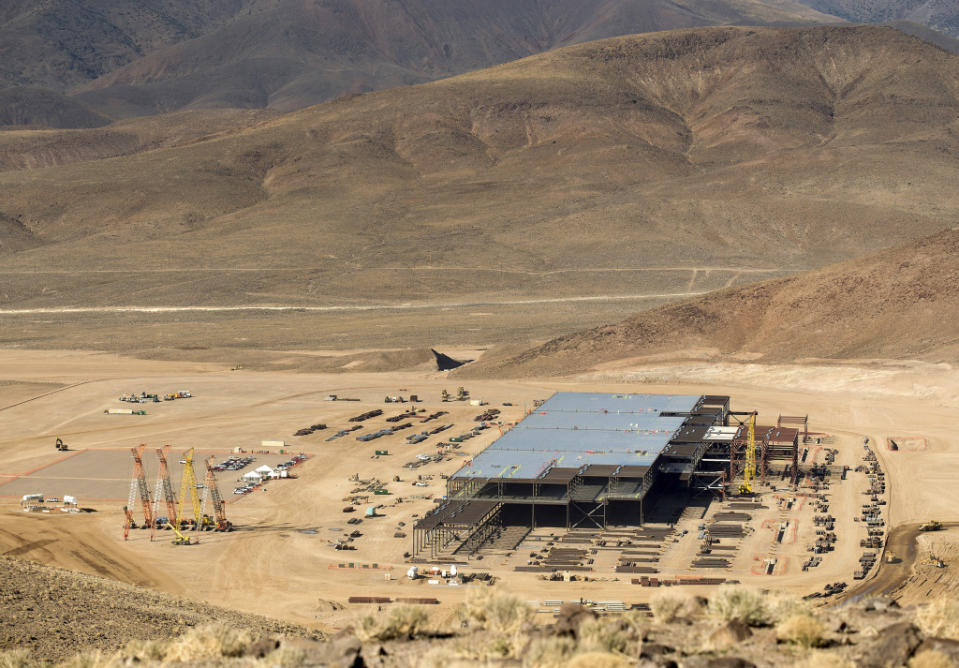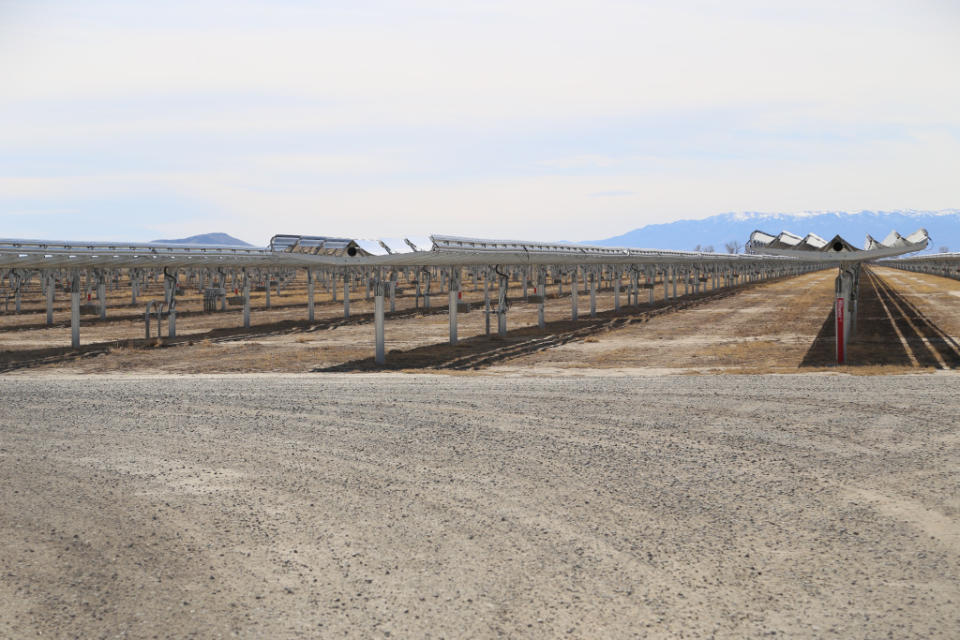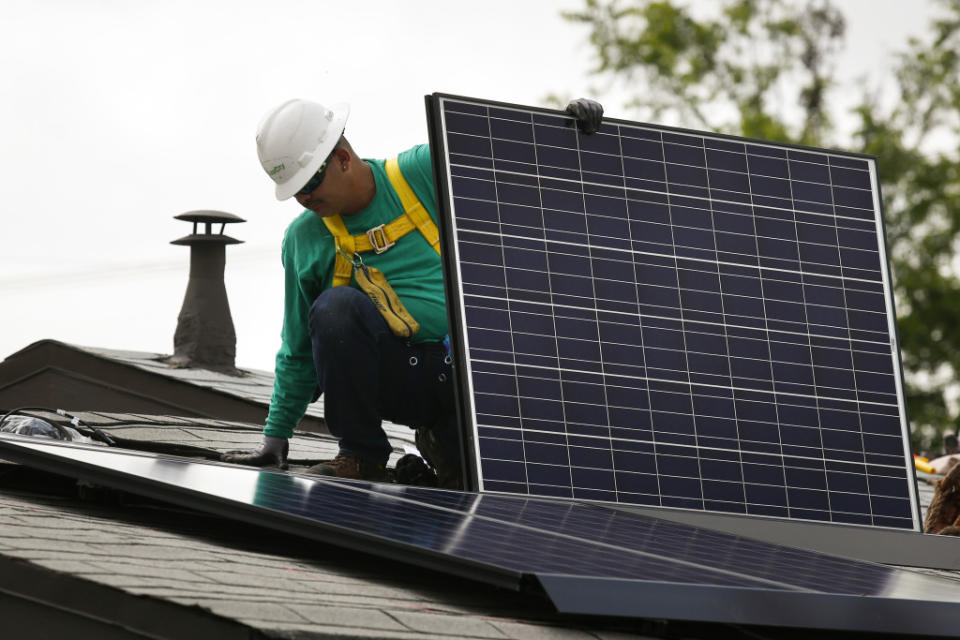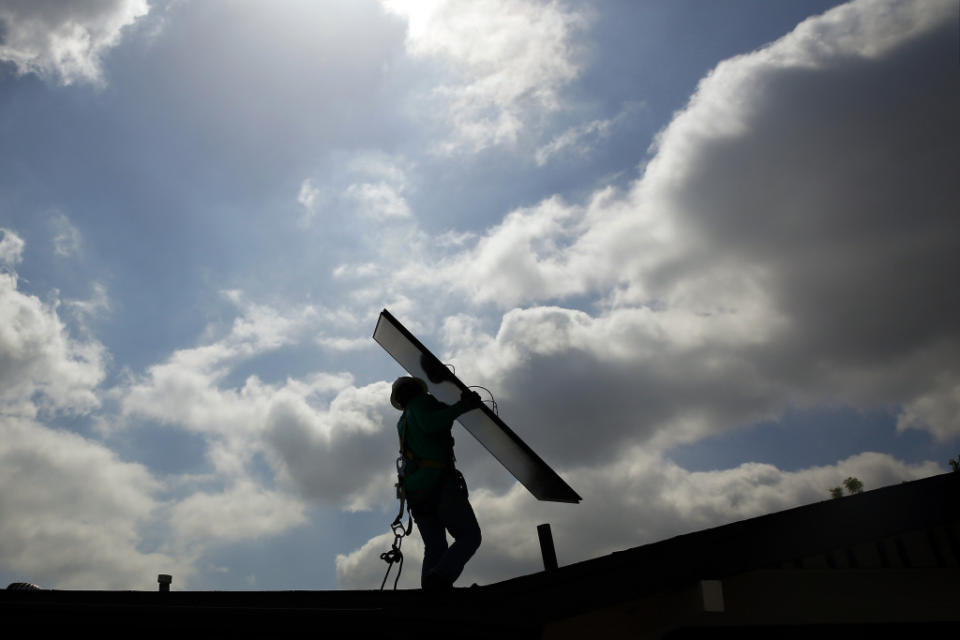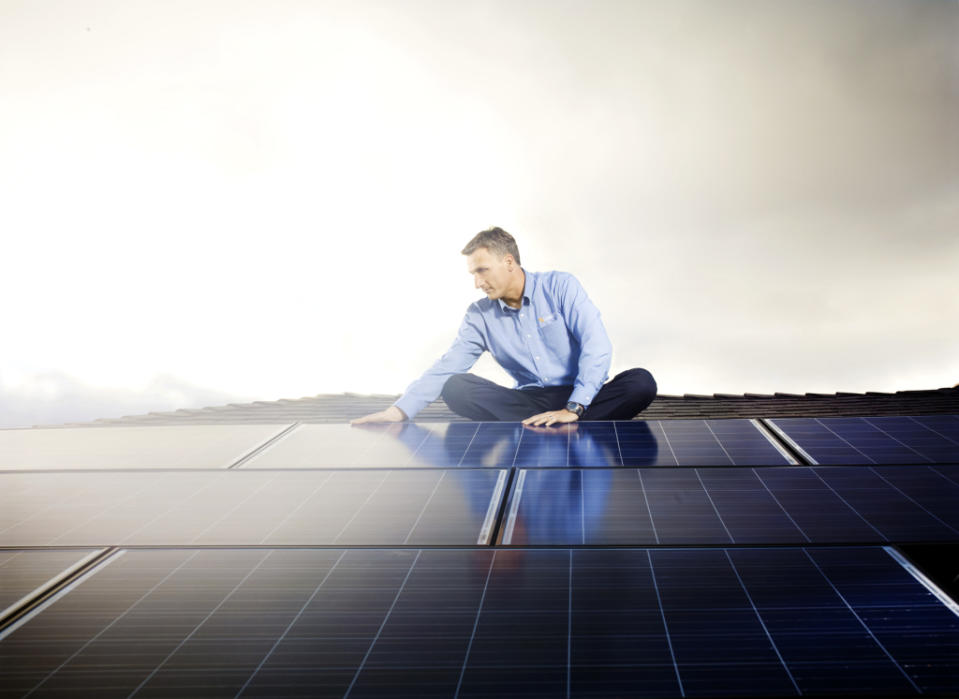The Other Side of the Solar Firestorm in Nevada
Earlier this year, celebrity actor Mark Ruffalo riled up a crowd of hundreds of protestors outside of an office building in sunny Las Vegas by shouting “let’s make life uncomfortable for them. . . because they’re wrong!” The “them” who Ruffalo was referring to included Nevada’s Public Utilities Commission and its chairman, Paul Thomsen, who joined the energy regulator in October.
The issue that raised the protesters’ ire was a rate hike for Nevada’s solar customers that went into effect at the beginning of this year. Thousands of people who bought solar panels assuming they’d have to pay certain fees and earn a certain rate for the solar they produced are now getting a less attractive deal. The rate change has made the rooftop solar industry, Nevada’s solar customers, and high profile protestors like Ruffalo furious.
A few months after that protest--which was partly organized by the solar company SolarCity that’s backed by billionaire Elon Musk--I find myself in Chairman Thomsen’s office in Carson City, Nev., just outside of Reno. Thomsen might be new(ish) to the Public Utilities Commission, but he has a long background in energy in the state. He was formerly the governor's energy adviser and an executive at Nevada’s geothermal giant, Ormat Technologies .
The night before our meeting, SolarCity had organized an event at Tesla’s massive battery factory outside of Reno where SolarCity and Tesla execs quietly lobbied Nevada’s legislators about the future of solar in the state. The solar industry is trying to get the commission's decision reversed through a November ballot measure, a legislative special session, and a judicial review. Tesla CEO Musk and SolarCity CEO Lyndon Rive are cousins.
Construction of the Tesla Gigafactory outside Reno in February 2015. Photograph by James Glover -- Reuters
Thomsen joked about the flashy shindig, at which actor Leonardo DiCaprio made a brief appearance: "I think I missed my invite in the mail." Given that Thomsen helped lead the controversial solar rate hike that angers powerful figures like Rive, Musk, and celebrity activists, supporters of rooftop solar energy have made him a target.
But the solar rate hike is actually much more complicated than the inflammatory language that Ruffalo used when he accused the commission of “taking from the mouths of the people and giving it to a single monopoly utility.” The rate boost is the result of the Nevada legislature’s collective decision last year to start moving away from the solar subsidy called “net metering,” whereby rooftop solar customers are paid inflated rates for the solar power they produce.
Utilities across the U.S., and the world as well, are trying to figure out how to manage and pay the extra cost for the influx of rooftop solar panels onto their power grids. When the solar industry was tiny and solar panels were expensive, progressive states like Nevada were eager to lend a hand with incentives like net metering to kickstart the nascent sector. But as more and more home owners have started to opt for solar deals--working with solar installers like SolarCity and Sunrun that offer deals with little or no upfront payments for homeowners--states are now rethinking whether the industry still needs that kind of handout.
Nevada has long been home to aggressive subsidies for clean power projects, including for both solar and geothermal power (by tapping into hot rocks deep underground). Eighteen years ago the state approved the solar net metering rule, and also something called a “renewable portfolio standard,” which mandated that its utilities must get a quarter of their electricity from clean energy by 2025. The renewable portfolio standard, in particular, has led to an explosion in large sprawling solar panel farms built across the state that are contracting with companies like tech gorilla Apple and data center giant Switch.
Apple’s Fort Churchill solar farm in Yerington, Nev. became fully operational a few months ago.Fortune/Katie Fehrenbacher
But as the number of rooftop solar customers started to grow in the state, and the cost of building large solar panel projects for utilities started to drop dramatically in comparison, Nevada’s legislators began to look at the rooftop solar net metering subsidy. They asked the PUC to determine if non-solar customers (the vast majority of the utility customers in Nevada) were being charged unfairly in their monthly bill for the added costs and incentives for solar customers.
The commission determined that, indeed, the bulk of Nevadans were shouldering the burden of the solar customers, and it spent last year figuring out how to fix that. The extra costs come from the above market rates that solar customers are paid (in bill credits) for their energy.
The solar industry have contested these figures that the commission came up with at various times. But the result of the commission’s findings are the controversial new rates introduced this year for solar customers.
In a concession to the controversy (and as a result of a request from the Nevada Bureau of Consumer Protection), the Public Utilities Commission partially tweaked its initial rate ruling and decided to give solar customers who already owned panels more time before the new rates are phased in. But they didn’t budge on the general idea of eventually phasing out net metering.
In response to the commission’s plan, solar companies like SolarCity have stopped doing business in the state and a solar lobbying group sued the commission, asking for a judicial review. Nevada solar customers also filed a class action lawsuit, which currently has 15,000 participants. In addition, the solar industry is pushing its ballot measure, called the No Solar Tax PAC that would reverse the new hiked solar rates.
Nevada could be a potential bellwether for how states across the country deal with maturing solar net metering incentives. Many states and utilities offer such programs.
This year, however, California decided to maintain its attractive solar net metering rates until 2019. It was a big win for the solar industry because of that state’s status as the nation’s leader in solar power generation.
We sat down with Chairman Thomsen, to get his take on everything that happened. Below is an edited and condensed version of our conversation.
Fortune: Did you expect such a vocal and critical reaction to the decision to phase out net metering?
Thomsen: The net metering issue had been debated at the legislature in 2015, and they [the solar industry] had done a really heavy lobbying job then. I had no doubts that they would lobby or try to influence the Public Utilities Commission. From a political standpoint, lobbying works really well. But in hearings--where people follow the administrators act and take evidence and cross examine parties--I guess I was a little shocked to see that they had so much of a PR and media focus. As they well know, we have to examine the evidence that's in front of us.
To the extent that certain solar companies were bringing in bus loads of their employees to give public comment, I don't think we expected those theatrics. But it was a very well-known issue in the community and we expected some discussion. Frankly, we are happy to have it. This commission is very open, and all of the information we use is available. I greatly appreciate public participation.
The legislature passed the bill SB374 (in 2015) which said we want to reduce the subsidies for net metering and move to cost-based rates. The legislature sets the policy and we implement it. So years ago the legislature said 'do net metering,' and then later last year it said 'shift away from net metering.'
Up until the passage of that bill, so between 1997 and June 2015, there were 6,000 participants in Nevada's solar net metering program. After they passed that bill, 24,000 people signed up to participate in net metering between June 2015 and the end of the year. That’s a 500% increase in customers.
A SolarCity employee installs a solar panel on the roof of a home in Los Angeles in May 2014.Photograph by Patrick T. Fallon -- Bloomberg/Getty Images
Why do you think that happened?
That's a great question to ask the solar companies. I don't know what the sales pitch was, but it must have been a good one to say, ‘We don't know what the future rate will be, we don't know if you're grandfathered in, but we have such a compelling sales pitch that we're going to see a 500% increase before the end of the year.’
I'll tell you, we sat through 20 hours of public comment and the most moving parts of that were the seniors who said, ‘I’ve taken out a second mortgage on my home to put on solar that starts at the retail rate and escalated 3% annually.’ I was gobsmacked to hear that. That to me is a reprehensible sales tactic. I wish the commission had the ability to prevent that from happening.
In Nevada, in the same 2015 session, there was a proposal for a consumer protection bill regarding rooftop solar and it was killed by SolarCity and Sunrun. I really hope that the Nevada legislature continues to look at how we protect consumers if they need it.
We struggled with the decision, because if we grandfathered everybody in, we would have done the opposite of what the legislature had wanted, which was we wouldn't have reduced the subsidies. We would have increased them by 500%. We discussed at length in the hearing, which date do you arbitrarily pick [for grandfathering]? Is it before the bill is passed? Is it after we hit 235 megawatts, which is the cap that the legislature had set? Or is it the end of the year? Are we picking and choosing between one solar customer and another?
A SolarCity Corp. employee carries a solar panel in 2014. Photographer: Patrick T. Fallon/Bloomberg via Getty Images
The subsidy we found was $16 million a year. So over 20 years that's an over $300 million subsidy, or cost shift that non-solar customers were providing to solar customers. Under our proposal, we've reduced that subsidy by two-thirds. So they're still receiving a $100 million subsidy, or cost shift, as we modify net metering going forward.
We were one of the first states to say there is empirical evidence that there is this cost shift. The [solar] industry didn't want to hear that. They can try to discredit all the studies they want but we have an open public case and all of the financial analysts and economists in this building that set rates said we found this cost shift and here's our proposal to mitigate it.
A lot of the discussion leading up to this was about 'is there a cost shift?' And I put that in the category of climate deniers-let's move on from that. The industry wanted us to make factual decisions based on Mark Ruffalo's testimony, and not the evidence in the case. For better or for worse, this commission makes decisions based on expert cross examination of the evidence of the case.
The solar industry really wants to have this debate in the media and outside of professional scrutiny. We had lots of data requests for information for them, which were not given to the commission. We put forward that we wanted to look at 11 variables to appropriately value the excess energy rate and they didn't provide quantifiable evidence for one single factor of those 11. Our staff did.
Now that we've come out with the general order I expect we'll see a discussion of those factors. And hopefully we can get that excess energy rate to move up taking into account those factors. But we need that evidence presented in front of the commission to do that.
Rive on a San Mateo, CA residential rooftop with Solar City installed solar panels. Photograph by Gregg Segal for Fortune
Do you think that the effect on the rooftop solar industry will be as dire as SolarCity has claimed?
Yes and no. I'll be really candid. There are certain businesses and customers that solar is a good fit for. When you look at MGM, who put solar on the roof of their convention center and can avoid demand charges and can use power in the middle of the day, it's a brilliant application.
But a huge part of the growth potential for Sunrun and SolarCity is that person who is not home during the day, and their home is not consuming power during the day. Normally it would never make sense, because why would I want to put a generator on my roof, and produce power when I don't need it unless I have net metering.
That business model will have to be closely scrutinized, or there needs to be some innovation like coupling solar with battery storage or something to provide customers services they need. You will still see applications that made economic sense before net metering continue even with this new net metering rate. You're still getting to sell your excess power for something.
One of the main arguments from the solar industry is that the Nevada government and the commission is being influenced by utility NV Energy, which finds rooftop solar competitive. What's your response to that?
The only people who tried to influence the commission through ex parte communication was the solar industry. Coming from the governor's office of energy, the governor and I were accused of having close conversations. I'll tell you that the last day I met with him, which was Sept. 28, 2015, when I accepted this position, he told me in his office that the only thing I'll ever ask of you is to have the strength to do what's right. That's the last conversation I've had with him to this day.
For NV Energy, it was the same thing. After I left the Governor’s Office of Energy, I have not had a single conversation with NV Energy outside of public hearings in this building. I don't even know if that's a good thing. We regulate them, so it would be nice to have more open conversations with them. But in this current environment of constant FOIA requests and calendar requests by groups like the Checks and Balances Project, they have just been completely isolationist from the commission.
What I would say flippantly is it's easy to pick an enemy and paint the utility as this nefarious character who is trying to squash the rooftop solar industry. What I'd say to that is I think there are far greater forces at work than any relationship in Nevada. There are all-time record low gas prices, and Nevada is developing large-scale solar panel projects at record low prices--some of the lowest prices in the nation if not the world.
You say what's the difference between solar power coming off a rooftop that the utilities have to pay 11 cents for, versus the 4.5 cents they’re paying for solar energy from large-scale solar panel projects? The delta has gotten so big. That's the debate.
The question that people bring up is since large-scale solar has gotten so cost effective, why hasn't rooftop solar? Lydon Rive says competition breeds innovation, and I would say subsidies do not breed innovation. And that big subsidy [net metering] that hasn’t changed in close to 20 years has resulted in this very drastic over pricing of a product that now has to figure out how to compete. That's where we were.
I think we're all incredibly confident in this building that this rate design is going to be the future. That's probably why certain members of the solar sector are so fired up and concerned about what that looks like going forward. And while some are suing and fighting us in court, there are others who are innovating and putting out products that can compete in that fair market world.

 Yahoo Finance
Yahoo Finance 